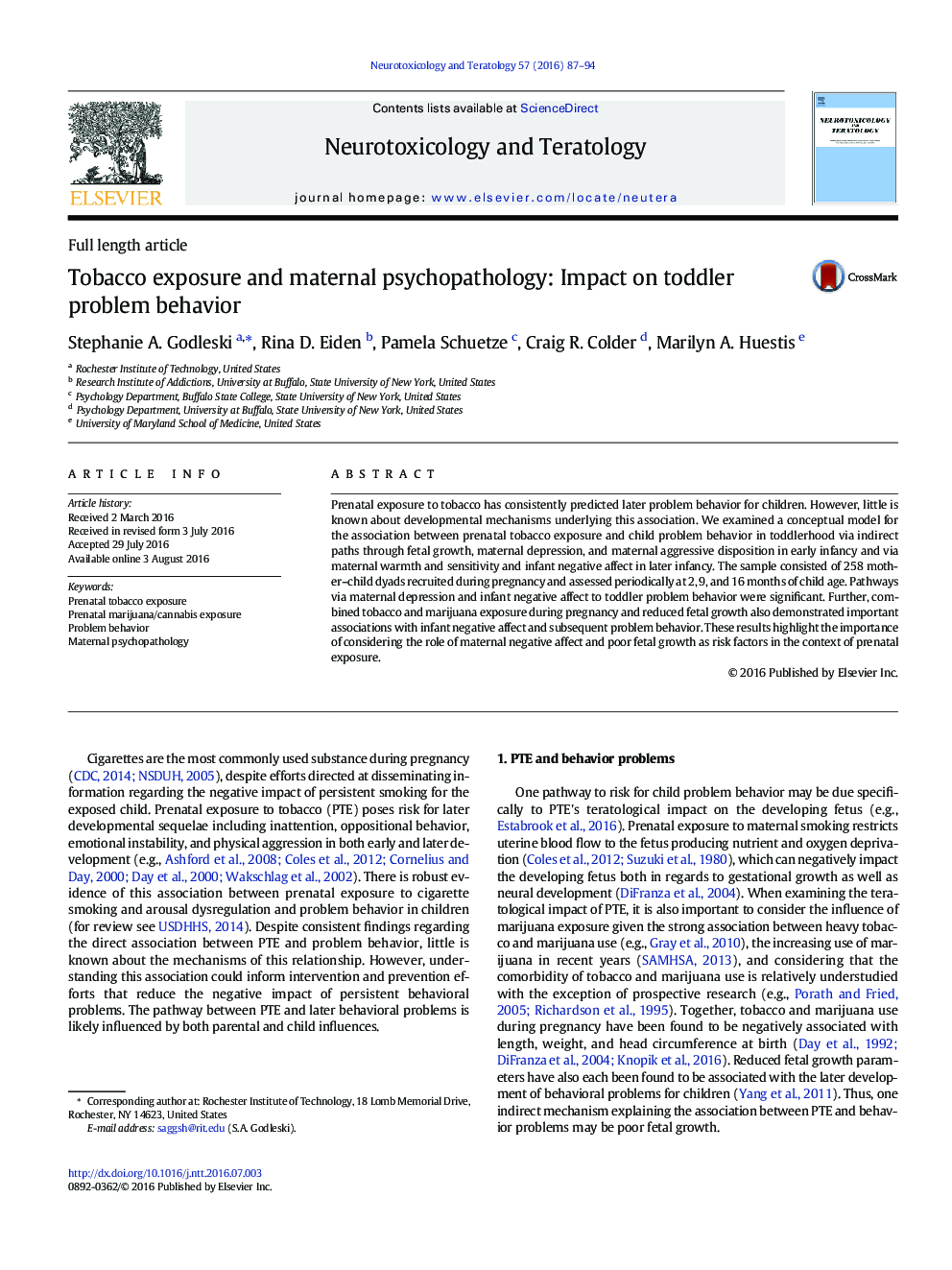| Article ID | Journal | Published Year | Pages | File Type |
|---|---|---|---|---|
| 5561074 | Neurotoxicology and Teratology | 2016 | 8 Pages |
â¢A model for the prenatal tobacco exposure and problem behavior link is proposed.â¢Indirect pathways via maternal and child characteristics are examined.â¢Maternal and infant negative affect are both important predictors.â¢Prenatal tobacco and marijuana use and affect may be areas for intervention.
Prenatal exposure to tobacco has consistently predicted later problem behavior for children. However, little is known about developmental mechanisms underlying this association. We examined a conceptual model for the association between prenatal tobacco exposure and child problem behavior in toddlerhood via indirect paths through fetal growth, maternal depression, and maternal aggressive disposition in early infancy and via maternal warmth and sensitivity and infant negative affect in later infancy. The sample consisted of 258 mother-child dyads recruited during pregnancy and assessed periodically at 2, 9, and 16Â months of child age. Pathways via maternal depression and infant negative affect to toddler problem behavior were significant. Further, combined tobacco and marijuana exposure during pregnancy and reduced fetal growth also demonstrated important associations with infant negative affect and subsequent problem behavior. These results highlight the importance of considering the role of maternal negative affect and poor fetal growth as risk factors in the context of prenatal exposure.
